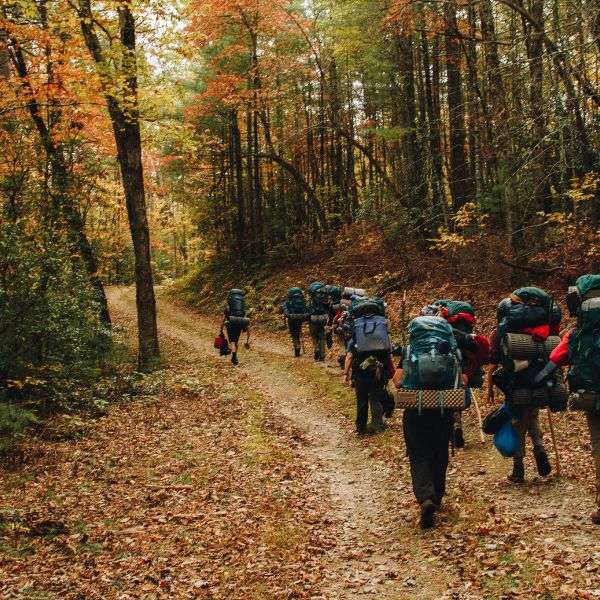Whether students are transitioning to home, an aftercare program or a therapeutic boarding school, the process of leaving Blue Ridge is bittersweet. On one hand, students are beside themselves with excitement to use a real shower and toilet again. But on the other hand, leaving the woods and saying goodbye to their group can be jarring. For the past few months, the program and the wilderness have provided an emotionally safe environment for the students to truly and freely be their best selves. As you can imagine, if you have ever left a life changing experience, navigating the transition process out of wilderness therapy can bring up many emotions. It is important for students and their families to be aware of the challenges that lie ahead as well as have the tools and strategies to help create a supportive environment into which the student can land. Transitions can simply be viewed as getting from point A to point B, but if families are able to slow down and welcome the transition chapter with compassion, realistic expectations and patience, then there is a lot of room for trust and relationships to deepen.
1. Slowness - Attune to the Emotions
Transitioning out of the program and back into the outside world usually involves a lot of logistical planning. How will you get from the Blue Ridge mountains to your next location? Will you fly? Will you need to stay in a hotel for a night? Can my child have their phone while in the car? While all these questions are very crucial to answer, the transition shouldn’t only be guided by logistical planning. When we only think about the plans, we might forget to attune to the emotions.
Without a doubt, everyone will be feeling some sort of emotion during this process: excitement, happiness, fear, sadness, anxiety, and or grief. By slowing down, you are able to make space for these emotions. For someone who has been living in the woods for many weeks, their senses can become overloaded as they enter back into the world of mirrors, clocks, music, restaurants, cars etc. So allow time for these feelings. For example, as you're driving away from Blue Ridge, have everyone in the car check in about how they’re feeling. At the airport, when you’re sitting at your gate, have everyone share an “I Feel Statement.” Taking time to express emotions throughout the transition will help normalize this practice as well as give you a chance to better understand your child’s experience.
2. Boundaries and Structure
While in the woods, your child has become used to the structure of the program. They have become accustomed to both the daily routine as well as the emotional structure that was upheld in their group. Boundaries and structures help us to feel safe and cared for, as well as lead to deeper relationships and trust being built. It is helpful while transitioning to have boundaries and structure, while also being flexible for the things you can’t predict.
Prior to your child discharging, you and your child will work with your primary therapist, family coach, and education consultant to create a future plan that best aligns with your child’s needs. Although you will solidify the big picture plan of where your child is going next, there will still be small details that are unknown. Such as, where and when will they get a haircut? Or when will they meet with their school counselor to sign up for classes? Or do they want to continue seeing their old therapist, if so on Thursday or Friday?
Although easier said than done, it is important to practice the feeling of contentment with the unknown. It can feel very unsettling to not know every detail about your child’s future, but not every small detail needs to be solidified before your child leaves the program. We encourage families to communicate clear plans of the short term future, such as the first 24-48 hours out of the woods. However, attempting to plan multiple weeks in advance with your child the day after they leave the woods can feel very overwhelming. Take it slowly, day by day.
Working with your child’s primary therapist and family coach, you will predetermine some boundaries that you will uphold during the transition. Perhaps you have already decided your child will not be able to have their phone during their travels, or they are only allowed to call one approved friend. Besides these bigger picture boundaries, there will also be small details that are unpredictable and require some flexibility. For example, is your child allowed to stop at a Chick-fil-A on the way to the airport? Upholding structure and boundaries can be an open dialogue. Your child has spent the past few months really getting to understand how their thoughts and emotions operate, as well as learning and practicing coping skills when escalated. Flexibility looks like inviting your child into the discussion of structure and trusting that they want the best for themselves as well.
3.Emotional Regulation Tools and Communication Skills
While in the program, you and your child have gained an immense amount of tools and language to be able to attune to emotions and communicate with each other. In some ways, it's almost equivalent to learning a new language. Your child has been totally immersed in this new language while in the woods. Parents, although not as immersed as their child, have also had many opportunities to practice this new language through letter writing, while going through the Parent Pathway and attending the Parent Workshop. You really begin to put all these skills into action though, when your child discharges from the program. It’s one thing to learn about “rescuing” through a webinar, but it’s an entirely different experience when you catch yourself rescuing your child from their emotions in person. It is also a different experience to share your authentic feelings while making direct eye contact with your child, instead of writing about your feelings in a letter.
Transitioning out of wilderness therapy is where the rubber meets the road. At first it can feel really awkward and clunky to share an “I Feel Statement” with your family. The more you lean into it, and take that leap of faith, the more normal it will become. In fact, practice the tools and communication skills in times of calmness. The more you practice this language when not distressed, the more likely you’ll be able to actually use it during times of high stress and conflict. And lastly, if there are siblings around, keep in mind their level of fluency in this new language. Everyone in the family might be on a different level of competence when it comes to using these new skills.
4. Relapse
Relapse is a possibility. Returning to old patterns and habits is a reality. However, relapsing doesn’t have to equal rock bottom. Families are allowed to have setbacks. It is normal for you as a parent to slip up and lecture your child about their behaviors instead of attuning to their emotions first. It is normal for your child to “forget” to bring their dishes from their bedroom back to the kitchen after you asked twice. A return to old patterns doesn’t have to lead to spiraling out. In fact, a return to old patterns can instead provide an opportunity for more growth. If relapsing is inevitable, then the focus shouldn’t be on relapsing itself, but instead on what you do after a set back. Can you take a break from the conflict? Take some deep breaths and check in with yourself. Can you revisit the conflict after all parties are feeling re-grounded? If approached with curiosity and compassion, relapse can lead to more growth.
5. How Family Intensives can Help with Navigating the Transition
Family Intensives are a 3 day, 2 night, family therapy camping intervention which begins Monday morning and ends Wednesday afternoon during your child’s last week in the program. Family Intensives are not only individualized, but individually facilitated. One family therapist and one senior field instructor are devoted to supporting your family for the duration of the experience. This allows for deeper conversations, intensive family therapy and guided practice and feedback. Family Intensives are intentionally designed to help prepare your child and family for the reality of leaving the woods.
Over the course of 3 days, there is ample time to celebrate everyone’s growth, practice new therapeutic and communication skills and discuss the next steps. In this day and age, it is a rare occasion to be able to sit together as a family, without the distraction of technology and work, and share intimate moments. With the support from a licensed family therapist, you will be able to articulate both your excitement and fears about the future. If your child is returning home, a Family Intensive provides a great opportunity to express emotions around the Home Agreement before enacting it. Family Intensives are a rewarding experience to repair family dynamics and practice new ways of being together again, all while receiving support and guidance from Blue Ridge staff.
Eligibility for a Family Intensive is clinically determined by the primary therapist and family coach. If interested, please reach out to your primary therapist or family coach to learn more about how a Family Intensive can help prepare you and your child for the transition.


